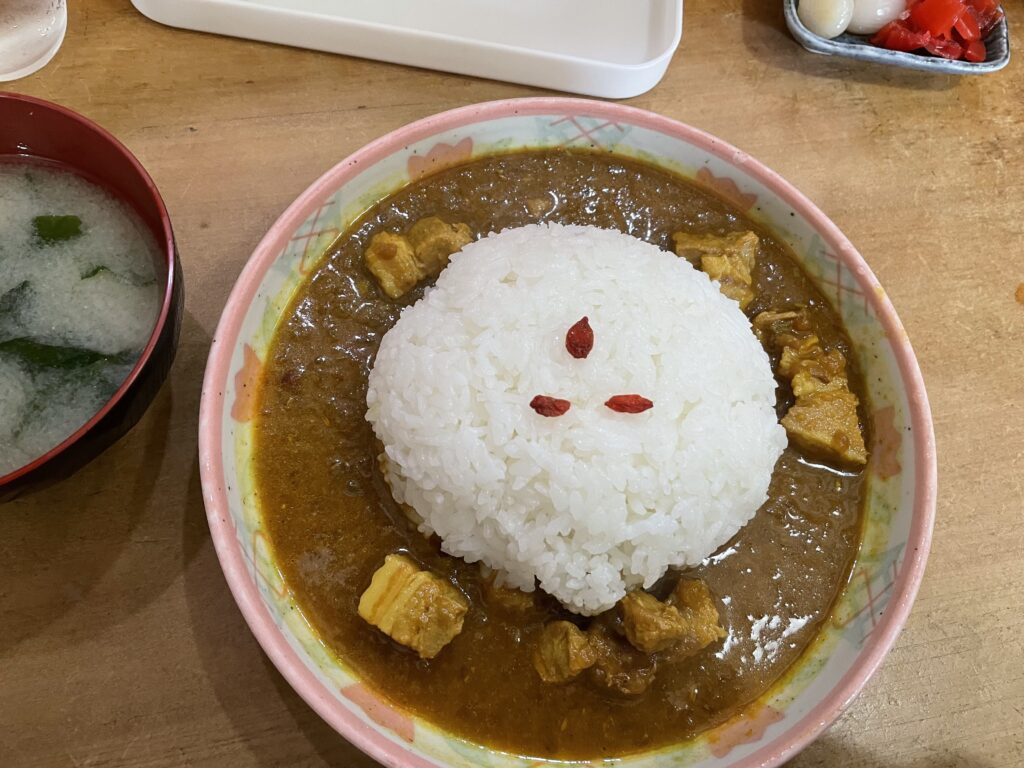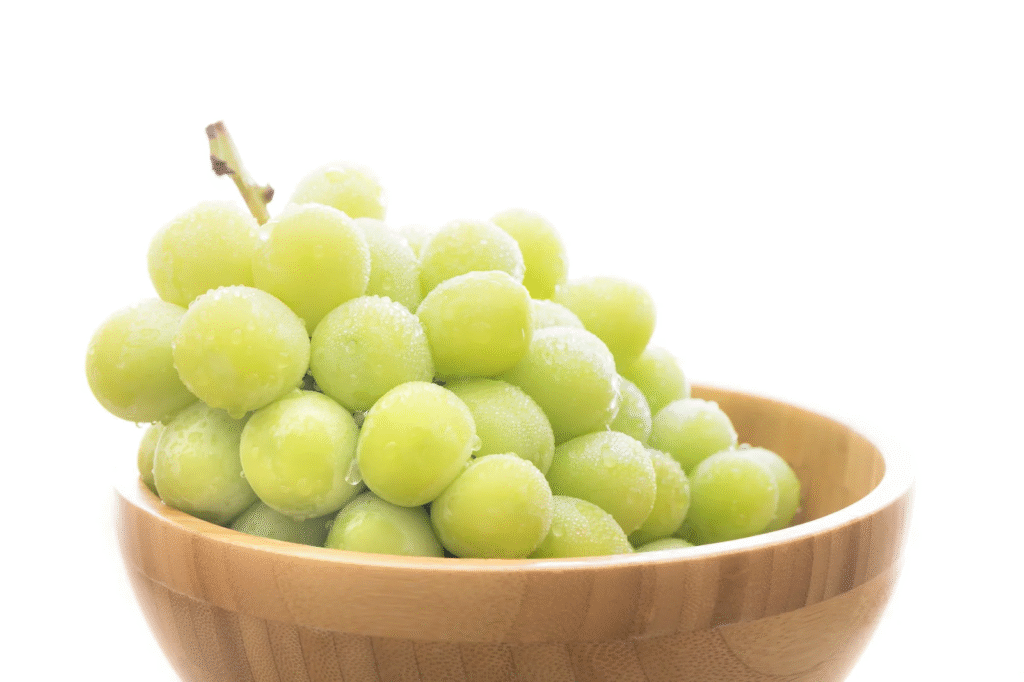Japanese food is loved all over the world — from sushi and ramen to tempura and yakitori.
But with so many choices, it’s easy to feel unsure about where to start or what to try first.
As someone born and raised in Japan, I’ve grown up surrounded by this amazing food culture.
Through this guide, I want to share with you not just the names of famous dishes,
but also a bit of the local perspective on how to enjoy them the Japanese way.
Whether it’s your first visit to Japan or you simply want to understand Japanese food a little deeper,
this beginner-friendly guide will help you discover must-try dishes and how to enjoy them with confidence.
Let’s explore the tasty world of Japanese food together!
Quick Navigation
Introduction
Japan offers so many amazing food experiences — from street snacks to traditional multi-course meals.
But for many first-time visitors, figuring out what to eat (and how to enjoy it properly) can feel a little confusing.
Should you go for sushi on your first night?
What’s the difference between ramen and udon?
Is it okay to eat with your hands? Do you need to say something before and after the meal?
In this guide, I’ll introduce some of the most popular and beloved Japanese dishes,
explain how they are typically enjoyed, and share a few simple tips to help you feel more comfortable and confident at the table.
Whether you’re looking for casual street food or planning to try a more formal dining experience,
this beginner’s guide will help you discover the delicious world of Japanese food — and enjoy every bite along the way.
Must-Try Japanese Dishes
Sushi and Sashimi
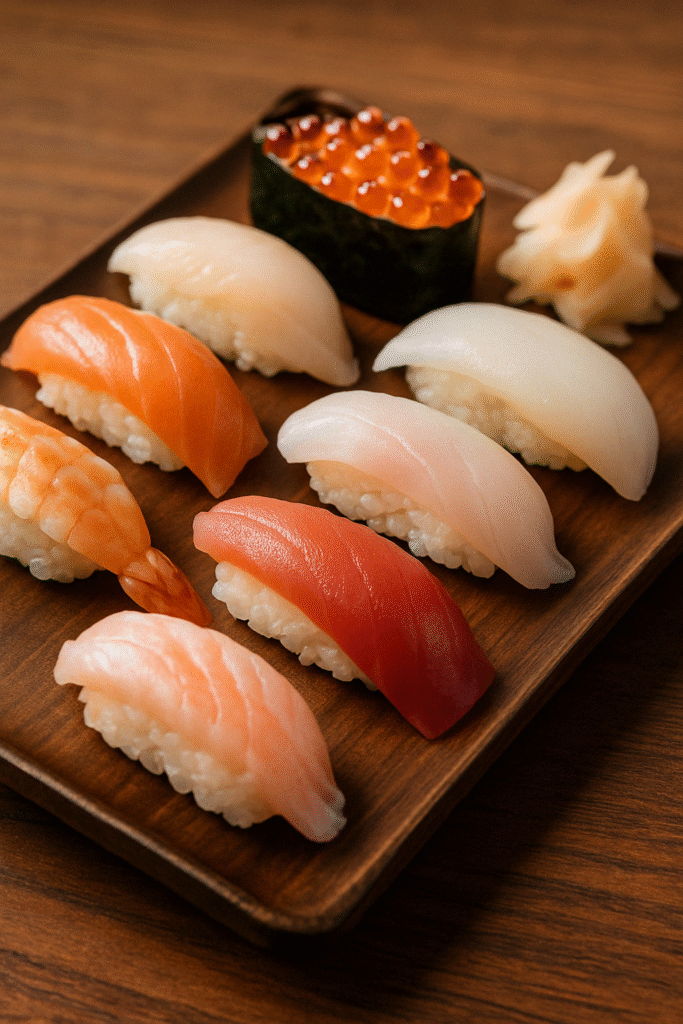
When people think of Japanese food, sushi is usually the first dish that comes to mind — and for good reason.
Fresh slices of raw fish (sashimi) served on rice seasoned with vinegar, or simply on their own, offer a clean and delicate flavor that many visitors love.
💡 How to enjoy like a local:
- Use soy sauce sparingly — just a light dip on the fish side (not the rice).
- If you visit a sushi restaurant with a counter seat and a sushi chef preparing the dishes in front of you,
try saying “Omakase” (おまかせ), which means “chef’s choice.”
This allows the chef to serve you their recommended selection of the freshest fish of the day. - If you’re unsure about raw fish, start with cooked options like tamago (sweet omelet), shrimp, or grilled eel (unagi).
Ramen (and regional varieties)
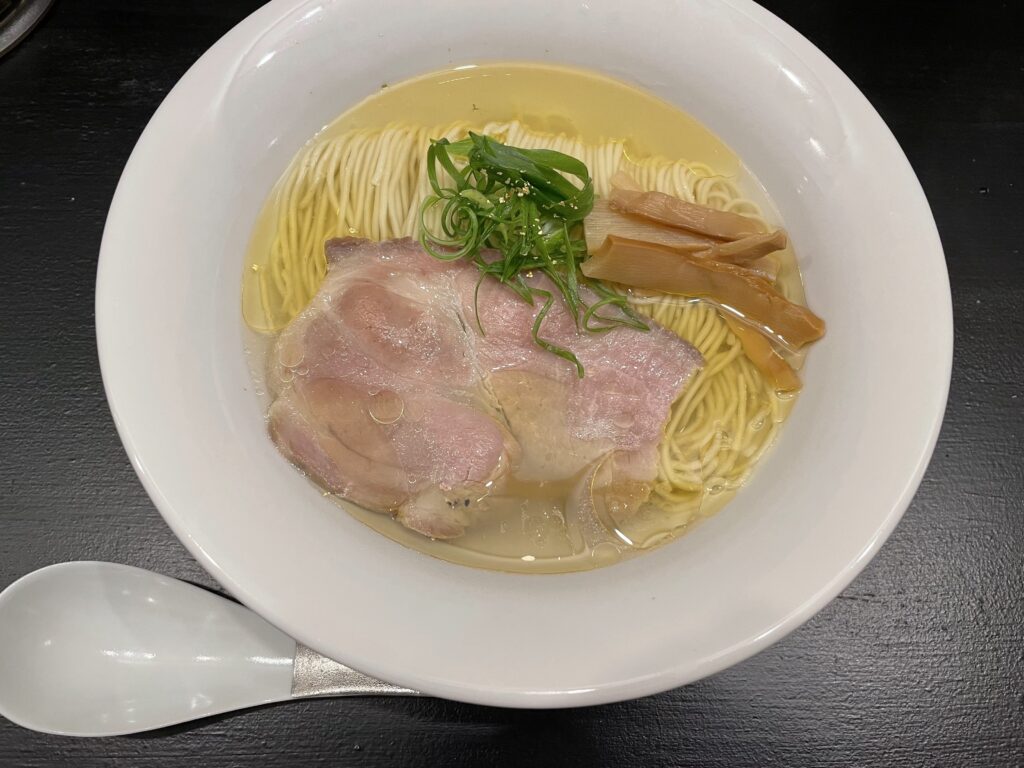
Ramen is one of Japan’s most popular comfort foods — hot noodles in a flavorful broth with various toppings like pork, egg, and green onions.
There are many regional styles of ramen, each with its own twist:
- 🍜 Tonkotsu (pork bone broth) — rich and creamy, especially famous in Fukuoka.
- 🍜 Shoyu (soy sauce broth) — clear and savory, common in Tokyo.
- 🍜 Miso (fermented soybean paste broth) — hearty and flavorful, from Hokkaido.
- 🍜 Shio (salt broth) — light and simple, with a clean taste.
💡 How to enjoy like a local:
- Don’t be shy about slurping your noodles — in Japan, it’s totally normal and even seen as polite!
Tempura

Tempura is lightly battered and deep-fried seafood or vegetables, known for its crispy texture without feeling too heavy.
Common tempura ingredients include shrimp, sweet potato, eggplant, and mushrooms.
💡 How to enjoy like a local:
- Dip the tempura lightly into the tentsuyu sauce (a mix of soy sauce, mirin, and dashi).
- Try sprinkling a little salt or matcha salt on certain types of tempura — some places offer different options.
Okonomiyaki and Takoyaki
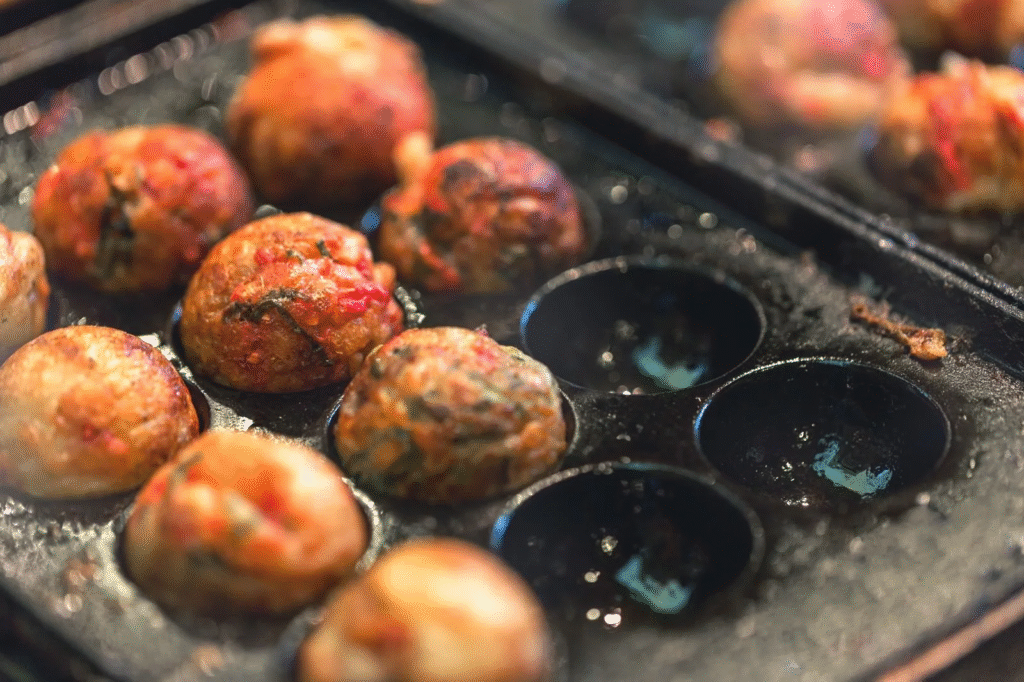
Okonomiyaki is often called “Japanese savory pancake,” made with flour, eggs, cabbage, and various fillings like pork, shrimp, or cheese.
It’s cooked on a hot plate and topped with sweet sauce, mayonnaise, dried seaweed, and bonito flakes.
Takoyaki are small, round batter balls filled with pieces of octopus (tako), green onions, and pickled ginger, cooked in special round molds.
Both are classic street foods, especially popular at festivals or local markets.
💡 How to enjoy like a local:
- For okonomiyaki, try mixing your own ingredients at restaurants where you cook it yourself on the table grill.
- With takoyaki, be careful — the inside is hot and gooey! Let them cool for a moment before eating.
Donburi (Rice Bowls)
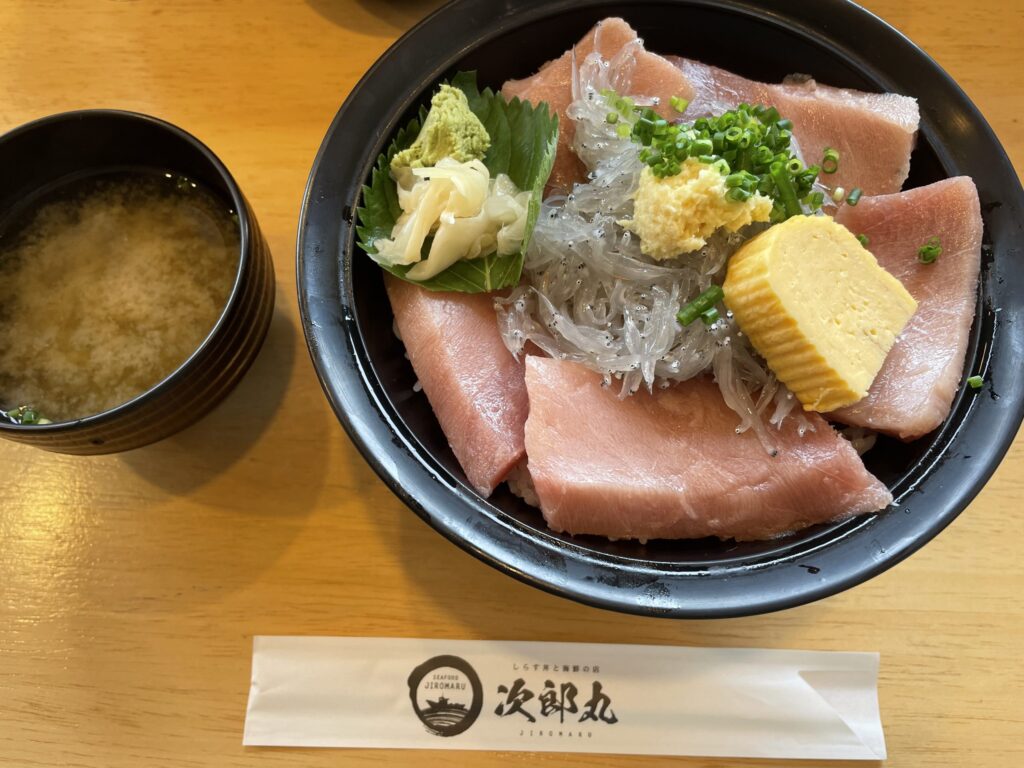
Donburi refers to a bowl of rice topped with various ingredients — a simple but satisfying Japanese comfort food.
It’s quick, affordable, and delicious, making it a popular choice for lunch or a casual dinner.
Some common types of donburi include:
- 🥩 Gyudon (beef bowl): Thin slices of beef simmered with onions in a sweet soy sauce-based broth.
- 🐟 Kaisendon (seafood bowl): A bowl of rice topped with assorted fresh sashimi (raw fish).
- 🐔 Oyakodon (chicken and egg bowl): Chicken and egg cooked together with onions in a savory-sweet sauce, poured over rice.
- 🐷 Katsudon (pork cutlet bowl): A breaded and fried pork cutlet (tonkatsu) with egg and onions over rice.
💡 How to enjoy like a local:
- Many donburi restaurants offer set meals (teishoku), which include soup, pickles, and sometimes a small side dish.
- Look for self-service stations where you can add extra toppings like green onions or pickled ginger.
Udon and Soba Noodles

Udon are thick, chewy wheat noodles, while soba are thin noodles made from buckwheat flour.
Both are classic Japanese dishes, enjoyed hot in a soup or cold with a dipping sauce — depending on the season.
💡 Popular styles to try:
- 🍜 Kake udon: Simple udon served in a light broth with green onions.
- ❄️ Zaru soba: Cold soba noodles served on a bamboo tray with dipping sauce (tsuyu), wasabi, and green onions.
- 🍤 Tempura udon or tempura soba: Served with crispy pieces of tempura on the side or on top.
💡 How to enjoy like a local:
- For cold soba, mix a little wasabi and green onions into the dipping sauce — not directly onto the noodles.
- Don’t be shy about slurping your noodles — it’s totally normal in Japan and even shows you’re enjoying the meal!
Japanese Curry

Japanese curry (kare) is quite different from Indian or Thai curry.
It’s thick, mildly spiced, and usually served with rice (kare raisu), making it a popular comfort food in Japan.
Typical curry ingredients include potatoes, carrots, onions, and meat like beef, pork, or chicken.
It’s often topped with pickled red ginger (beni shoga) for extra flavor.
💡 Popular variations:
- 🍛 Katsu kare: Curry served with a crispy breaded pork cutlet (tonkatsu) on top.
- 🍳 Curry with a soft-boiled egg or melted cheese for extra richness.
💡 How to enjoy like a local:
- Many curry shops offer different levels of spiciness — from very mild to super hot.
- Try the pickled sides (often served for free) to balance the richness of the curry.
Yakitori (Grilled Chicken Skewers)
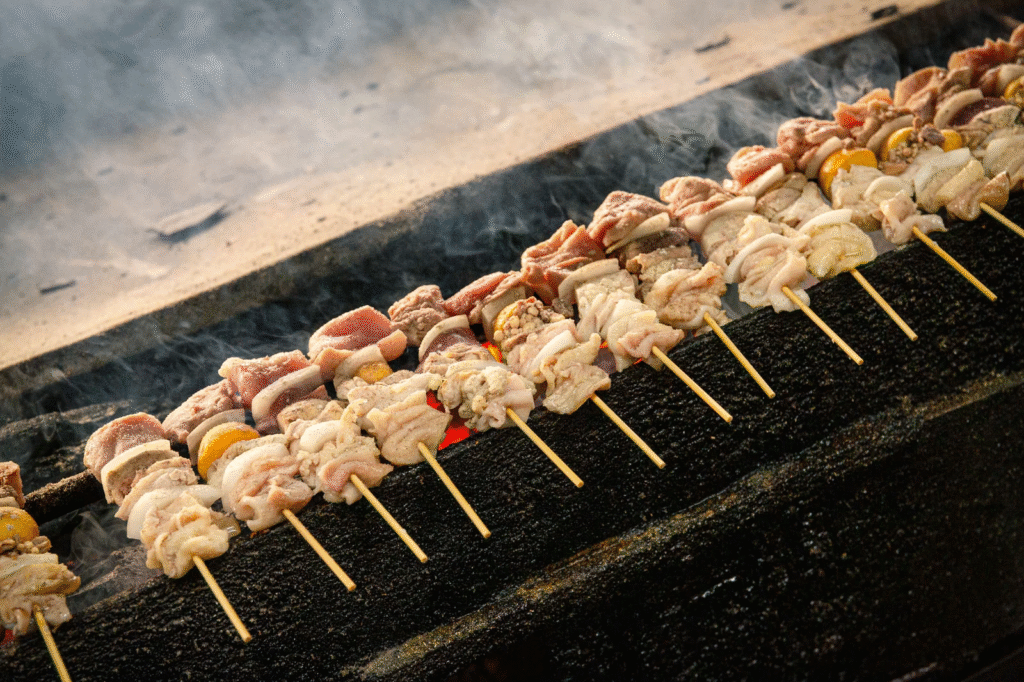
Yakitori are grilled chicken skewers, a popular dish often enjoyed with a cold beer at izakayas (Japanese pubs) or food stalls.
The chicken is cut into bite-sized pieces, placed on bamboo sticks, and grilled over charcoal.
There are many different parts of the chicken used in yakitori, not just the meat:
- 🐔 Momo (thigh meat): Juicy and flavorful.
- 🐔 Negima: Chicken with green onions.
- 🐔 Tsukune: Chicken meatballs, sometimes served with a raw egg yolk for dipping.
- 🐔 Teba: Chicken wings.
- 🐔 Reba: Chicken liver — soft and rich in flavor.
💡 How to enjoy like a local:
- You can usually choose between salt (shio) or sauce (tare) seasoning.
- At many yakitori places, ordering a little at a time and sharing several types with friends is the usual style.
- Don’t forget to say “Kanpai!” when enjoying it with a drink!
In addition to these well-known dishes, many regions in Japan have their own local specialties — unique flavors that reflect the local culture and ingredients.
For example, in Yamanashi Prefecture, near Mt. Fuji, you can try hōtō (thick flat noodles in a hearty miso-based vegetable soup) or Yoshida udon (a chewy noodle dish with strong soy-based flavor).
These regional foods are also popular among travelers who want to taste something special from the area they visit.
If you have the chance to explore outside of the big cities, be sure to look for local dishes — it’s one of the best ways to experience the heart of Japanese food culture.
Traditional Japanese Meals
What is a “Teishoku” Set Meal?
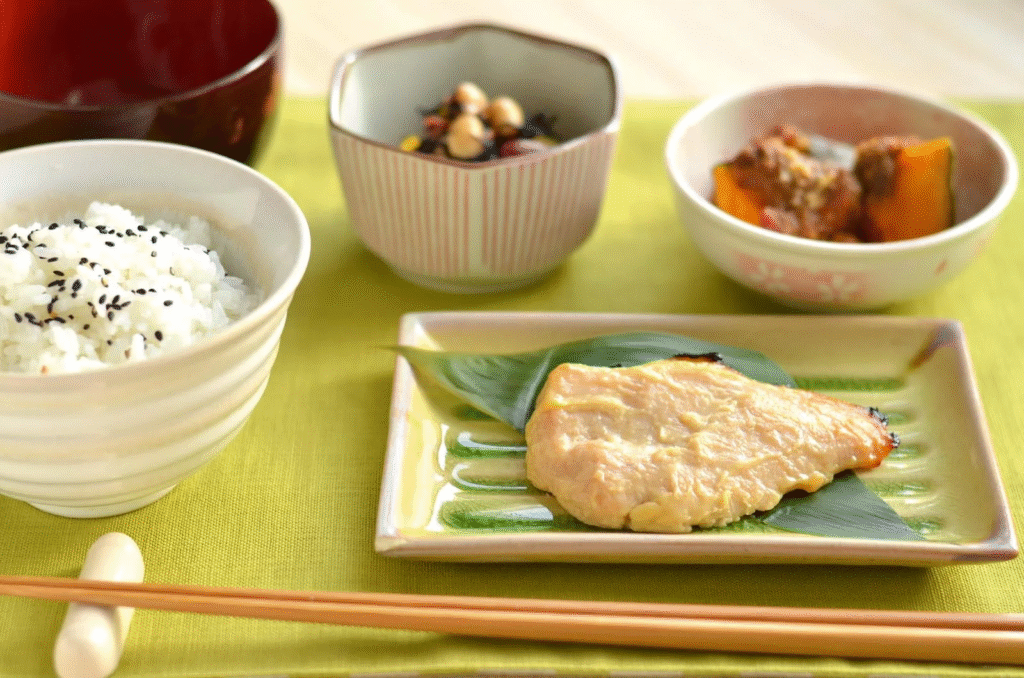
A teishoku is a set meal that typically includes:
- 🍚 A main dish (like grilled fish or fried chicken)
- 🍲 A bowl of rice
- 🥢 Miso soup
- 🥒 Pickled vegetables (tsukemono)
- 🥗 Sometimes a small side dish like salad or tofu
Teishoku meals are a great way to enjoy a balanced Japanese meal — with rice, soup, and several small dishes served together on one tray.
💡 How to enjoy like a local:
- Try ordering the daily special (higawari teishoku), often recommended by the restaurant.
- Don’t worry if the menu is only in Japanese — many places have food displays or photos to help you choose.
Kaiseki (Traditional Multi-Course Dining)
Kaiseki is a traditional style of multi-course Japanese dining, often considered the highest form of Japanese cuisine.
It focuses on seasonal ingredients, careful presentation, and balance of flavors.
A typical kaiseki meal may include:
- Appetizers
- Seasonal soup
- Sashimi
- Grilled dish
- Steamed dish
- Rice and miso soup
- Dessert
💡 How to enjoy like a local:
- Many kaiseki meals are served at ryokan (traditional inns) or high-end restaurants.
- Don’t worry about remembering the order — just relax and enjoy the flow of the meal, course by course.
Bento (Japanese Lunch Boxes)

Bento are Japanese lunch boxes packed with rice, protein, vegetables, and small side dishes — all neatly arranged in a box.
You can find bento at convenience stores, supermarkets, train stations (ekiben), or specialty shops.
💡 Popular types of bento:
- 🍱 Makunouchi bento: A classic assortment of rice, fish or meat, vegetables, and pickles.
- 🛤️ Ekiben: Regional specialty bento sold at train stations, perfect for eating on the Shinkansen.
💡 How to enjoy like a local:
- Try different bento depending on the region — ekiben often feature local flavors and ingredients.
- Some shops offer bento with seasonal themes, so the contents change throughout the year.
How to Order and Eat Like a Local
You don’t need to speak perfect Japanese to order food — just a few basic phrases can make your experience much smoother.
Useful phrases:
- 🙋♂️ “Sumimasen” (すみません) — Excuse me / To get the staff’s attention.
- 📋 “Kore kudasai” (これください) — This one, please (pointing at the menu or food display).
- 🥢 “Omakase de” (おまかせで) — I’ll leave it to the chef (used at sushi counters, etc.).
- 🙇♀️ “Gochisousama deshita” (ごちそうさまでした) — Thank you for the meal (after eating).
💡 Pro tip: Many restaurants have plastic food displays or photo menus — pointing works just fine!
How to Use Chopsticks Properly
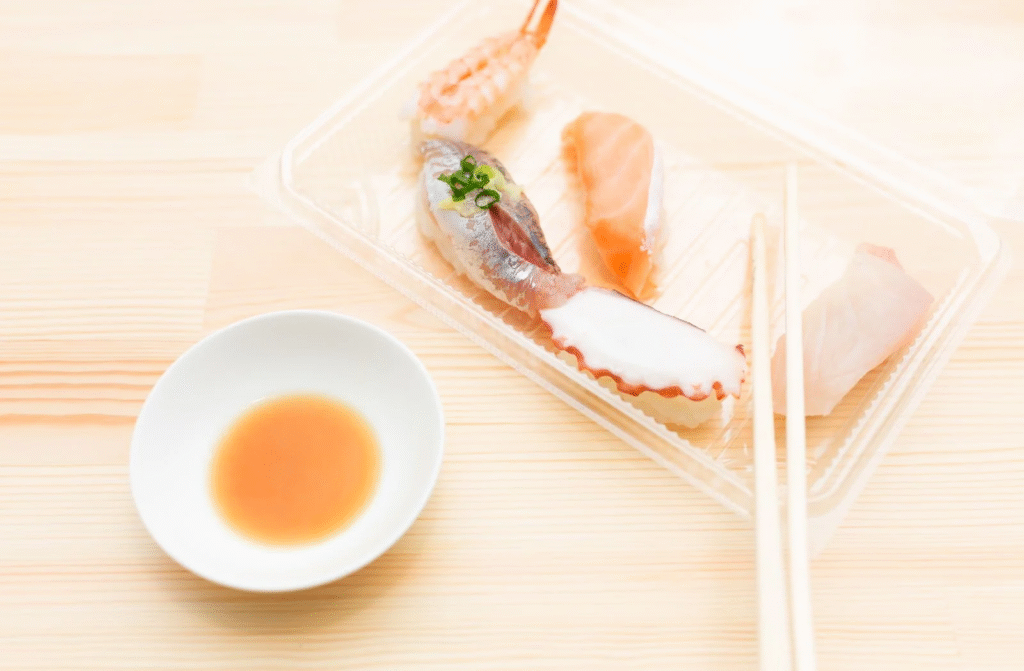
Chopsticks (hashi) are the main utensils in Japan, but there are a few simple rules to follow:
- 🚫 Don’t stick your chopsticks upright into a bowl of rice — this is done at funerals.
- 🚫 Don’t pass food from one pair of chopsticks to another — this also relates to funeral customs.
- ✅ Use the chopstick rest (hashioki) when not using your chopsticks.
- ✅ If there’s no rest, place them neatly across your bowl or plate.
💡 If you’re not confident with chopsticks, don’t worry — many places offer spoons or forks if you ask.
Table Manners Recap (and More on Etiquette)
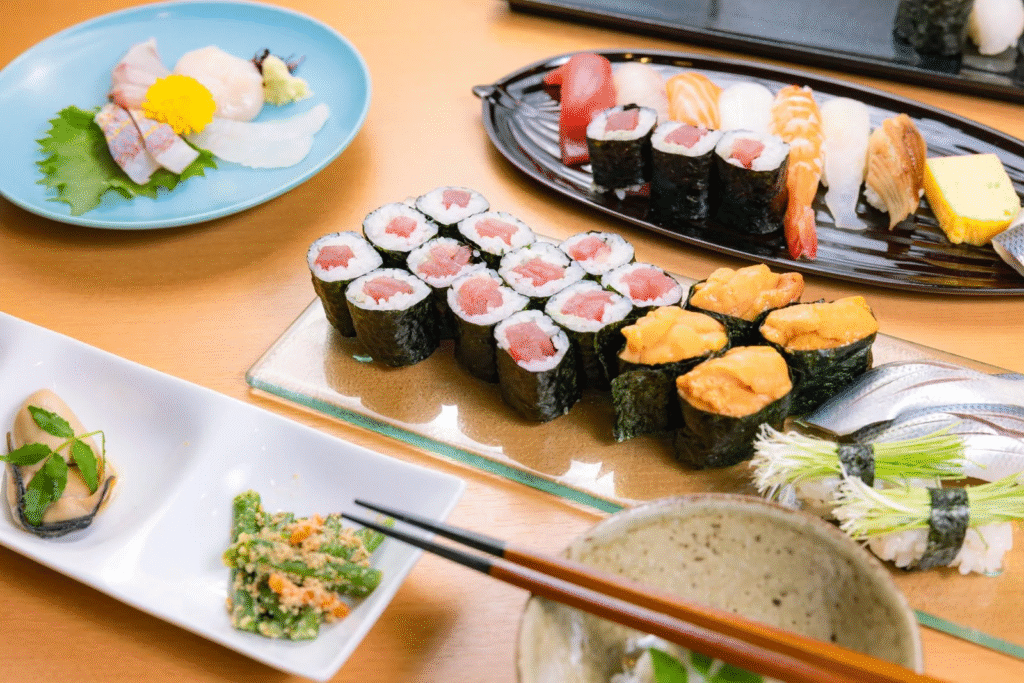
In Japan, small gestures and polite behavior at the table are appreciated:
- 🗣️ Say “Itadakimasu” (いただきます) before you start eating — it means “I humbly receive.”
- 🙇♀️ Say “Gochisousama deshita” (ごちそうさまでした) after finishing — a way to show gratitude for the meal.
- 🎵 Keep your voice low — Japanese dining tends to be quiet and relaxed.
- 🎒 Keep your bags and personal items off the table whenever possible.
👉 For more about Japanese manners, check out my detailed guide here:
【 Mastering Japanese Etiquette: Essential Manners for Respectful Travelers 】
Conclusion
Trying new foods is one of the best ways to experience a different culture — and Japan has so much to offer.
From well-known dishes like sushi and ramen to local specialties like hōtō or Yoshida udon,
there’s always something delicious to discover.
Don’t worry about knowing every rule or perfect manners.
The most important thing is to stay curious, be polite, and enjoy the experience.
Japanese people are usually happy to see visitors trying their food and culture with respect.
I hope this guide helps you feel more confident about what to eat in Japan.
Take your time, explore different flavors, and find your own favorites along the way.
If you’d like to learn more about traveling smoothly and respectfully in Japan, check out these helpful guides:
👉 10 Essential Japan Travel Tips for First-Time Visitors
👉 Mastering Japanese Etiquette: Essential Manners for Respectful Travelers
👉 How to Use Public Transportation in Japan: Simple Tips for First-Time Visitors

